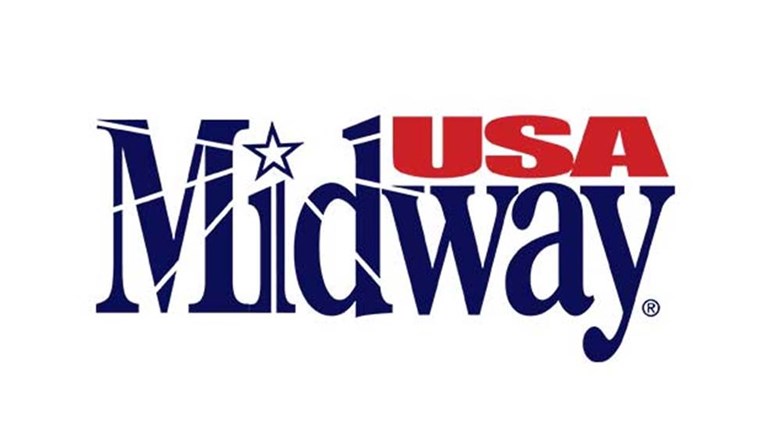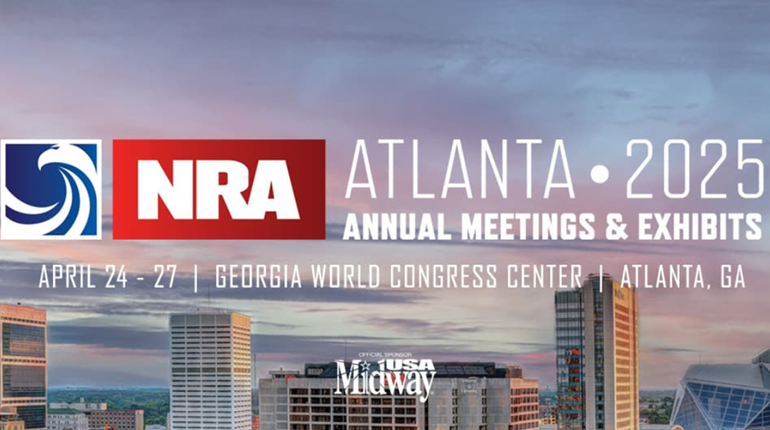
When I was a teenager itching to buy my first centerfire rifle, I never imagined there might be a time when ammunition was expensive or hard to find. I bought a secondhand Ruger Mini-14 when I was in myearly 20s and remember picking up boxes of .223 Rem. on sale for $2.99. Back then, the normal price for Winchester's USA brand was around $3.50 for 20 rounds. If only I'd have known then what I know now.
Those days are long gone. If you find a box of brass-cased .223 Rem. priced below $8 today, you are doing well. For the occasional shooter or once-a-year hunter, this isn't that big a deal. However, for dedicated shooters, competitors, law enforcement and committed tactical personnel, the cost of ammunition is a huge factor. And for civilians looking to brush up their self-defense skills, the cost of ammo needed to shoot a training course can be nearly as much as the tuition.
Despite the fact that the U.S. military is gobbling up 5.56 NATO, .308 Win. and 9 mm, there is still a lot of ammo in the world. A good deal of it is relatively inexpensive surplus ammunition that uses smokeless powder, but corrosive primers. Are corrosive rounds the answer to our ammo woes, or are we asking for trouble?

When shooters hear the word "corrosive" they often run for the hills. They view corrosive ammunition as archaic, something from the Dark Ages. The truth of the matter is we fought all of World War II with corrosive ammunition. That's right, your grandpa's M1 Garand ran exclusively on corrosive ammunition. Corrosive primers had a good reputation for reliability and long-term storage, both important factors for military ammunition.
While the U.S. military began to phase out corrosive-primed ammunition in the 1950s, many nations continued to use the stuff during the Vietnam era and beyond. Military ammunition must meet rigorous requirements. Corrosive primers do not equal cheap or poorly made ammo. When many folks see the word corrosive they think "junk," but that simply is not the case.
Shooting the Record Straight
While discussing the corrosive ammunition issue with my good friend Dave Biggers of XS Sight Systems, he suggested we get together and really compare apples to apples, shooting corrosive and non-corrosive ammunition head-to-head. He put together an event at the Tac Pro Shooting Center outside of Mingus, TX, where we ran AR- and AK-platform rifles chambered in 5.45x39 mm, 7.62x39 mm and 5.56 NATO with both types of ammo.

For three days we shot rifles from CQB distance out to 300 meters using corrosive military surplus ammunition from the former Soviet bloc, along with brass-cased U.S. training ammo and match-grade fodder from Federal, Hornady and Winchester. We put hundreds of rounds through rifles from Adams Arms, Century International Arms, Colt, DPMS, Krebs Custom and Ruger. The Colt, DPMS and Ruger rifles were all equipped with Leupold Mark 4 riflescopes.
On the mornings of days one and two, we benched the guns at 100 yards and slow-fired them to record accuracy and average group sizes. Later we ran several drills from 7 to 25 yards, firing multiple-round exercises. One afternoon we moved out to longer range and engaged reactive steel targets at 300 meters.
Accuracy is always subjective. There are a lot of factors to take into consideration. The biggest variable, of course, is the shooter. Even expert shooters have bad days, and not every shooter will favor every rifle. So to make the test as objective as possible, we included results from six shooters who fired numerous rifles each day.
At the close of the event, we had a good amount of data to consider. In the accuracy department there were some surprises as well as confirmations. As I expected, the match-grade 5.56 NATO and .223 Rem. loads posted the best results, with groups averaging less than 1 inch at 100 yards. However, the less expensive training ammunition still proved worthy. Even with corrosive-primed ammunition, the AR-style rifles produced 1- to 2-inch groups.
Groups with the 5.45x39 mm surplus corrosive ammunition averaged in the 2- to 3-inch range at 100 yards. Silver Bear zinc-cased ammo shot tighter, and the new Hornady non-corrosive 5.45x39 mm load with a lacquered-steel case was better still.
Moving out to 300 meters, we had several reactive steel targets including half-silhouettes and a 2-foot-square plate. Firing the Ruger SR-556 I was able to call my own hits through the high-powered Leupold scope. For a real challenge I used AKs in both 5.45x39 mm and 7.62x39 mm topped with XS Big Dot rifle sights. During this exercise I needed the assistance of a spotter to help me get on target and call out hits. Once I had my hold figured out, hits on the 2-foot steel plate came with regularity, even with the corrosive loads. For a platform and ammunition that is denigrated for a supposed lack of accuracy, this was pretty impressive.
All of the firearms began the test clean and well lubricated. Each had several hundred rounds of ammunition run through it, and the only gun to go down during the trial was Biggers' personal Ruger Mini-14.
Cleaning Is Critical
I suspect there is a direct correlation between the rampant popularity of polymer-framed pistols and the death of the gun-cleaning ethic. For some reason, shooters today don't feel like they need to clean their guns. Keep in mind firearms are simply machines made from steel, aluminum, plastic and wood. Any machine—be it an automobile, chainsaw or firearm—runs best when it is clean and well-lubricated. The same applies to guns regardless of what type of ammo you run through them, but you have to pay special attention to cleaning when you are finished firing corrosive loads.

Corrosive primers leave behind a residue of potassium chloride and sodium chloride. This attracts and holds moisture on the steel of your firearm. What we found during our test is that the biggest areas in danger of corrosion are the barrel, bore, bolt, action and any type of muzzle brake or flash suppressor.
The best way to fight corrosion is to purchase a cleaning kit with appropriately sized rods, patch eyes and brass bore brushes. If you own an AR or AK-74, this is a simple proposition, and innumerable M16 cleaning kits abound at bargain prices. Along with the cleaning kit, pick up a gun oil that lubricates and protects. There are many, such as M-Pro 7 and Break Free CLP. I use Friction Defense from Brownells quite a bit. Almost any gun oil will do the trick; the key is using it!
A basic cleaning kit and oil are all you'll need if you shoot standard, non-corrosive ammunition. If you know you are shooting loads with corrosive primers or you aren't sure because it is surplus from a gun show, you'll also need ammonia. Don't worry about buying pure ammonia in bulk. Just pick up a squirt bottle of window cleaner. The generic brand from your local discount store will set you back a dollar or two at most.
After you are done shooting corrosive ammunition for the day, squirt the window cleaner liberally from the chamber down the bore. Pull the bolt, bolt carrier and op rod (if there is one), and douse them as well. Some folks rinse off all of the ammonia and loosened corrosive salts with hot water. Others simply wipe down the sprayed components and let the ammonia evaporate. Some old cotton T-shirts will come in handy. A cotton bore swab is a nice accessory, but you can make do with patches.
Once the corrosive salts have been tackled with the window cleaner, it is time for an all-purpose brush (an old toothbrush works well) and some gun oil. Scrub off the built-up carbon on the bolt mechanism and operating rod if applicable. Use a brass bore brush and patches to clean the barrel. Remember, it's always a good idea to brush the bore from the chamber forward. Do not scrub back and forth. With precision rifles, take care not to mar or damage the barrel crown.
Thoroughly lubricate areas of the action where metal moves against metal. Any carbon steel should receive a light coating of lubricant. Reassemble the gun, and you are ready for the next range session.
In short, shooting corrosive ammo only adds one additional step to a cleaning process you should be following already, along with a bit of extra attention to detail. Really not a big deal if you consider the money you save on surplus corrosive loads more than pays for the time it takes to clean up after shooting them.
Buying in Bulk
There are numerous suppliers of surplus ammunition. Century International Arms and Old Western Scrounger come first to mind. J&G Sales seems to have a decent stock. MidwayUSA and Cheaper Than Dirt are other places to check out. Of course, your local gun shop could probably order corrosive ammunition for you at a good price, and you can still occasionally find deals at gun shows.
I've been using corrosive 5.45x39 mm and 7.62x39 mm for several years as inexpensive training ammunition. A few years ago at a gun show, I paid $129 for a 1,080-round "ham can" of 5.45x39 mm. Bust out your calculator, and you'll see that breaks down to 11 cents a round. Due to the current state of affairs the price has jumped to around $150 a can, but that is still a bargain no matter how you slice it.
How about .223 Rem. and .308 Win.? Century bought a warehouse full of 5.56 NATO and .223 Rem. with brass, lacquered-steel and zinc cases. Some of it has corrosive primers, but the prices are low. Our NATO allies have manufactured 7.62 NATO and .308 Win. ammo for decades, and good deals can be found.
When it comes to online retailers, check their sites frequently to see what is in stock. Here's a helpful hint: He who hesitates is lost. When you find what you are looking for, pry open your wallet and order it. Companies get this ammunition in relatively small lots, so it goes fast. If you wait a couple of weeks, it might be gone.
Myth Busted
The idea that corrosive ammunition is junk by definition is nothing more than a myth. Your father, grandfathers or great-grandfathers used it during World War I, World War II and the Korean War, and it served them well. If you clean your guns and don't mind putting a little extra effort into maintenance, corrosive ammunition might be the ticket to more range time. It is available in bulk lots of a thousand rounds or more at prices that are tough to beat. That's a lot of shooting, a lot of training and a lot of fun.


































